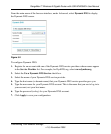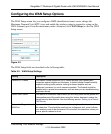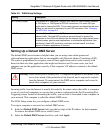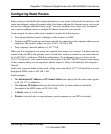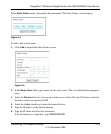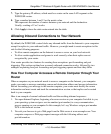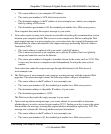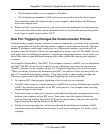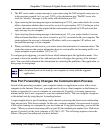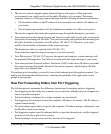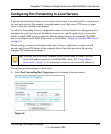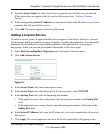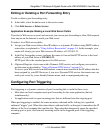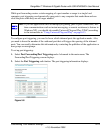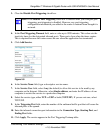
RangeMax™ Wireless-N Gigabit Router with USB WNR3500L User Manual
Customizing Your Network Settings 5-13
v1.0, November 2009
• The destination address is your computer’s IP address.
• The destination port number is 5678, the browser session that made the initial request.
Your router then sends this reply message to your computer, which displays the Web page
from www.example.com.
6. When you finish your browser session, your router senses the termination of communications.
Your router then removes the session information from its session table, and incoming traffic
is no longer accepted on port number 33333.
How Port Triggering Changes the Communication Process
In the preceding example, requests are sent to a remote computer by your router from a particular
service port number, and replies from the remote computer to your router are directed to that port
number. If the remote server sends a reply back to a different port number, your router will not
recognize it and will discard it. However, some application servers (such as FTP and IRC servers)
send replies back to multiple port numbers. Using the port triggering function of your router, you
can tell the router to open additional incoming ports when a particular outgoing port originates
a session.
An example is Internet Relay Chat (IRC). Your computer connects to an IRC server at destination
port 6667. The IRC server not only responds to your originating source port, but also sends an
“identify” message to your computer on port 113. Using port triggering, you can tell the router,
“When you initiate a session with destination port 6667, you must also allow incoming traffic on
port 113 to reach the originating computer.” Using steps similar to the preceding example, the
following sequence shows the effects of the port triggering rule you have defined:
1. You open an IRC client program, beginning a chat session on your computer.
2. Your IRC client composes a request message to an IRC server using a destination port number
of 6667, the standard port number for an IRC server process. Your computer then sends this
request message to your router.
3. Your router creates an entry in its internal session table describing this communication session
between your computer and the IRC server. Your router stores the original information,
performs Network Address Translation (NAT) on the source address and port, and sends this
request message through the Internet to the IRC server.
4. Noting your port triggering rule, and having observed the destination port number of 6667,
your router creates an additional session entry to send any incoming port 113 traffic to your
computer.




